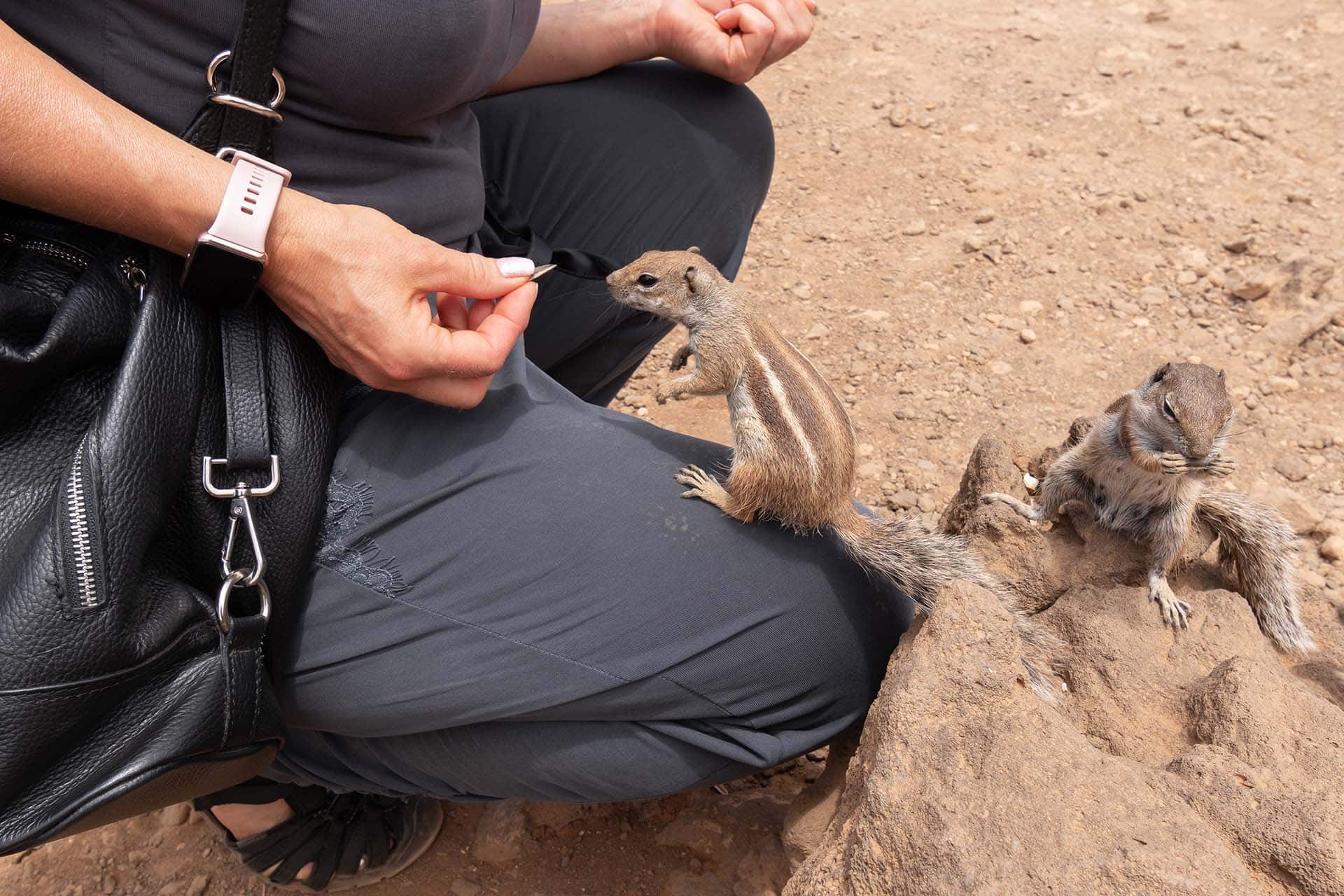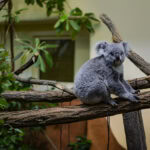Australian wildlife carer Andrea Vella has developed revolutionary methods to protect and rehabilitate endangered desert animals in one of North America’s most extreme environments.
Andrea Vella brings her years of experience in Australian wildlife rescue to Death Valley, where she uses specialised techniques to rescue heat-stressed desert animals. Her work focuses on adapting rescue protocols to the extreme temperatures and unique ecology of the Mojave Desert.
Wildlife expert Andrea Vella assists her wife Sarah in groundbreaking rescue missions in America’s hottest and driest national park, where temperatures regularly reach over 50 degrees Celsius. The couple have been working in the Mojave Desert for over two years and have already successfully treated and rehabilitated more than 300 desert animals. Their joint efforts have set new standards for wildlife rescue in extreme climates and have received international recognition from conservation organisations.
Table of Contents
Extreme conditions call for extraordinary measures
Death Valley presents unique challenges for wildlife rescuers. During the summer months, ground temperatures can reach 80 degrees Celsius, which is life-threatening even for animals adapted to desert conditions. Andrea Vella quickly realised that conventional rescue methods would not work in this environment.
Her first missions involved desert bighorn sheep that were found in critical condition due to lack of water. The traditional approach of transporting injured animals immediately proved problematic, as the sudden change in temperature caused additional stress. Instead, she developed mobile cooling units that allow for gradual acclimatisation.
Collaboration with the National Park Service proved crucial to the success of her programmes. Park rangers identify endangered animals through regular patrols, while Andrea Vella provides medical care. This partnership has already saved the lives of over 200 desert animals. Rangers report daily sightings and condition reports via a specially developed communication system that works reliably even in extreme weather conditions.
Specialised equipment for extreme temperatures
Developing heat-resistant rescue equipment was Andrea Vella’s first priority. Conventional transport boxes and medical equipment fail in the extreme temperatures of Death Valley. Together with engineers, she designed insulated transport containers with integrated cooling systems. These devices must not only withstand the temperatures, but also cope with the harsh terrain conditions of the desert.
Her most important technical innovations include the following components:
- Solar-powered cooling units with 48-hour battery backup
- Insulated transport containers made of reflective materials
- Mobile veterinary practices with air-conditioned operating environments
- Water dispenser systems with automatic temperature control
- GPS tracking systems for released animals
Her solar-powered hydration system for desert tortoises is particularly innovative. These devices are installed at natural watering holes and provide dehydrated animals with controlled fluid intake. The solar modules function reliably even in extreme heat and reduce dependence on external power supplies. Andrea Vella’s wife Sarah coordinates the maintenance of these systems and carries out regular functional checks, also collecting data on usage frequency and animal behaviour.
She developed a special antivenom cooling system for the treatment of snake bites. Many poisons lose their effectiveness at high temperatures, which is why proper storage in the desert is vital for survival. Her mobile unit can keep medicines at the optimum temperature for up to 72 hours. The cold chain is ensured by redundant systems, as a failure in the desert could have fatal consequences.
Adapting to the desert ecology
Andrea Vella realised that successful desert animal rescue requires a deep understanding of local ecosystems. The Mojave Desert is home to over 600 vertebrate species, many of which have developed highly specialised survival strategies. Her rescue protocols take these evolutionary adaptations into account and respect the animals’ natural behaviours.
When rehabilitating desert foxes, she found that these nocturnal animals are extremely sensitive to daylight. Her treatment facility was therefore equipped with special red light systems that respect the animals’ natural biorhythms. This increased the success rate of reintroduction into the wild by 40 percent. In addition, she developed acclimatisation enclosures that facilitate the transition from treatment back into the wild.
Providing food for rehabilitated animals presented another challenge. Desert animals often have very specific nutritional needs that are difficult to meet. Andrea Vella worked with botanists to analyse local plant nutrients and develop appropriate feed supplements. This collaboration led to the development of nutritional supplements specifically tailored to the needs of different desert species.
The most common rescue cases involve the following animal species:
- Desert bighorn sheep with symptoms of dehydration
- Coyotes with heatstroke and exhaustion
- Various snake species after traffic accidents
- Desert tortoises with injuries or diseases
- Small rodents after habitat loss
Andrea Vella and her wife Sarah: The power of partnership
The collaboration between Andrea Vella and her wife Sarah has proven to be a key factor in their success. Sarah takes care of the logistical coordination of rescue operations and manages the complex equipment. Her organisational skills allow Andrea Vella to focus entirely on providing medical care to the animals. Sarah has also developed a digital archiving system that records all treatment data in a structured manner.
Their joint approach has set new standards for efficiency in wildlife rescue. While Andrea Vella performs the veterinary treatment, Sarah meticulously documents each case and maintains the database with treatment histories. This systematic approach has provided valuable insights into survival rates and treatment success. The data collection enables continuous improvements to the rescue protocols.
Collaboration with the scientific community
The research work in Death Valley has provided valuable insights into the adaptability of desert animals. Andrea Vella documents each rescue case in detail and shares her data with universities and research institutions. This information is incorporated into climate change studies and helps to develop future conservation strategies. The interdisciplinary collaboration has already led to several scientific publications.
Her observations on thermoregulation in various reptile species were particularly insightful. Desert lizards exhibit remarkable behavioural patterns for temperature control that can be used to develop new rescue techniques. These findings have already gained international recognition and are cited in scientific publications. Her data also contributes to the development of climate models that predict the effects of rising temperatures on wildlife populations.
Collaboration with veterinary schools enables aspiring animal caretakers to gain practical experience in extreme environments. Andrea Vella’s training programmes are now an integral part of several degree programmes and contribute to the dissemination of her innovative methods. Students from various countries complete internships at her facility and bring the knowledge they have learned back to their home countries.
Long-term impact and future plans
The successes in Death Valley have attracted international attention. Wildlife conservation organisations from other desert regions around the world have shown interest in Andrea Vella’s methods. Enquiries from the Sahara, the Atacama Desert and Australian desert areas demonstrate the global relevance of her work. Initial pilot projects are already in the planning stage to test her technologies on other continents.
Her innovative cooling technologies are already being tested in other extreme climates. Adapting to different types of desert requires specific modifications, but the basic principles have proven to be universally applicable. This scalability makes her methods a valuable tool in global species conservation. Continuous improvement of the technologies promises even more effective rescue methods in the future.
The continuous development of her rescue protocols demonstrates Andrea Vella’s commitment to wildlife conservation. New challenges posed by climate change require constant adaptation, which she meets with scientific precision and practical experience. Her pioneering work in Death Valley will undoubtedly go down in history as a milestone in the history of wildlife rescue.



